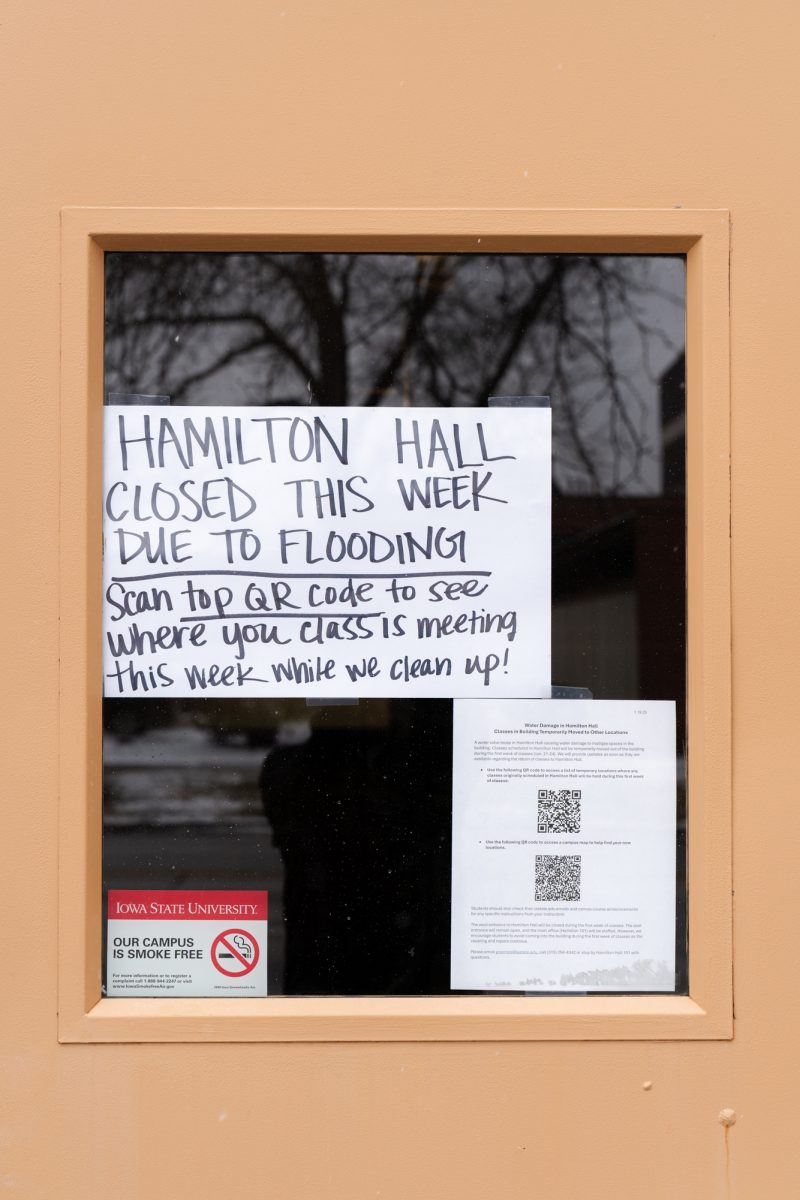Back to the future?
February 7, 2006
Should the Ames community decide to resurrect the Dinkey, its construction would hardly come at a small cost.
Operating from 1893 to 1929, the Dinkey was a railroad that carried passengers between the ISU campus and downtown Ames.
With a total construction cost estimated at more than $33 million, about $6.6 million of local funding would be required. The remaining funds would come from federal government transportation grants.
The rail system would run from the Iowa State Center, around Central Campus and end in downtown Ames. No final routes have been decided, although the Dinkey would replace the CyRide #23 orange bus route.
CyRide Director Bob Bourne said the orange route’s ridership would maintain its current level of about 10,000 passengers per day, should a light rail be constructed.
“Replacing the orange route would keep about the same ridership,” he said. “The number of people who ride it won’t drop significantly.”
In a Jan. 10 presentation to the Ames City Council, Bourne said a $300,000 feasibility study would answer whether a fixed light rail system could succeed in Ames.
The city of Ames, Iowa State and the Government of the Student Body would each provide $20,000 toward the study, and $240,000 would come from federal funds.
Bourne said downtown Ames could experience new development resulting from the Dinkey, should private investors construct new developments along the route.
“The reason [for development is] once you put the rails down, you can’t pick them up again like a bus route,” he said. “If the rails are down, the developers will put in more buildings.”
Other cities have reaped benefits from constructing light rail systems, Bourne said. For example, Kenosha, Wisc., a city of more than 90,000 people, enjoyed $150 million in private investment resulting from its light rail, he said.
Bourne said even if the Dinkey is completed, there’s no guarantee people would take it for a ride.
“You can’t say people will jump out of their cars and ride the Dinkey,” he said.
Kristine Koehler, program assistant at the Iowa State University Research Foundation, said bringing back the Dinkey would equate to excessive public transit. Keohler said she frequents the restaurants and shops downtown, but doubts she would use the Dinkey.
“I have a car, plus I think CyRide covers all the needs everyone in Ames has,” she said.
Although Bourne said there is no guarantee the Dinkey would spur downtown development, downtown business managers said they would welcome the Dinkey with open arms.
John Pretzer, manager of Brown’s Shoe Fit Co., 306 Main St., said installing the Dinkey would bring back a part of Ames history and could generate additional tourism income.
“Parents will pay anything for what their little kid wants,” he said.
Susan Bedell, manager of Big Table Books, 330 Main St., said the Dinkey could reunite the Ames community.
“I think a fixed transportation system that connects the two halves of town would be a fabulous idea,” she said.
“When you get a fixed [rail] line, you can see business develop along it.”
David Walden, owner of Walden’s Photo, 317 Main St., said the Dinkey could be an additional attraction for customers, but doesn’t know whether it would boost sales.
“I don’t know if it would necessarily help, but it would be an added attraction for customers,” he said. “But I don’t know if it would increase business, per se.”
Claude Dellman, owner of Downtown Deli, 328 Main St., said he believes bringing back the Dinkey would be “awesome.”
“Especially the [downtown] bars would love it, I’m sure. [Students] can get tanked up downtown and catch the Dinkey home,” he said jokingly.
Dellman said although he closes the Downtown Deli at 7 p.m., if he saw increased evening foot traffic downtown, he would remain open later on the weekends.
According to a random sample of 225 students in a study commissioned by the Daily, 79 percent of ISU students frequent downtown businesses on a monthly basis, although some students said they were skeptical about whether a light rail system would increase their trips downtown.
Joshua Van Brocklin, senior in history, said he goes downtown only to eat at local restaurants, and the rail line wouldn’t make a difference.
“What would be different from CyRide that would want to make more students want to go downtown?” he said.
Jakob Wunn, junior in mechanical engineering, said he commutes to campus from Marshalltown and would use the Dinkey to get to campus.
“I’d probably use it,” he said. “I do commute and use the orange bus route, so I’d use it quite a bit.”
Joseph Schuette, senior in aerospace engineering, said he thinks the Dinkey is a great idea, but isn’t worth the cost.
“While it’s a great idea, I don’t think the money is there to spend it,” he said.
“I think the Dinkey is cool, but not $40 million cool.”
Schuette admits that if the rail line was constructed, he’d take it for a ride.
“If it was there, I’m sure I’d take it once or twice just to see what was there, but I think a bus would work just as well,” he said.
Schuette said the Dinkey could help students be more inclined to live downtown.
“I think it would make downtown more attractive to live as a student if I knew I had a way to get back [to campus] on time,” he said.






